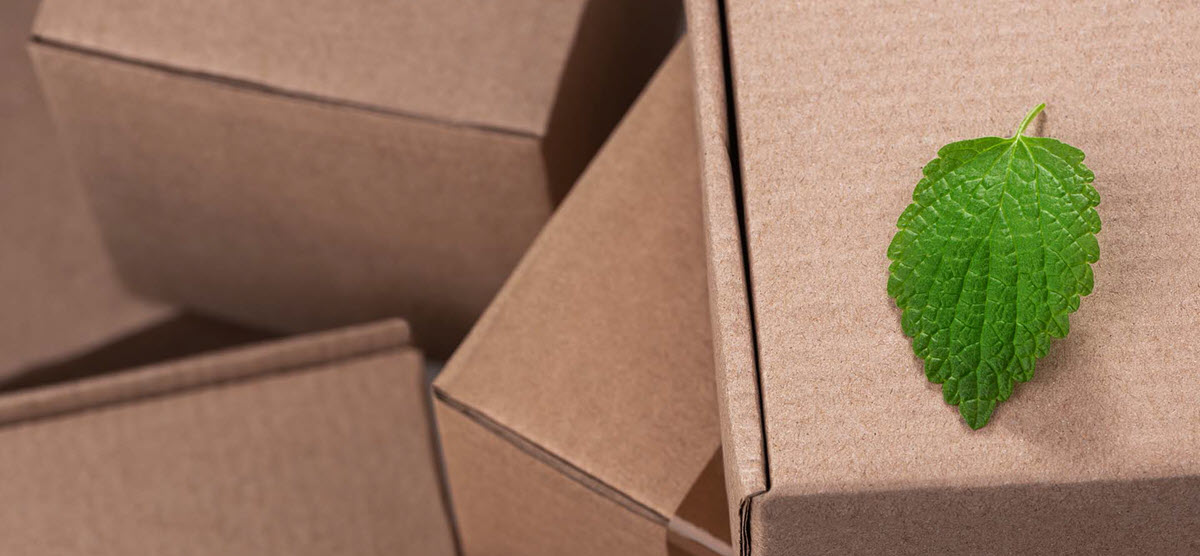Ecommerce has experienced an unprecedented amount of growth in the last few years, but at the same time, it has also had a significant negative environmental impact.
This trend has emphasized the need for eco-friendly practices to minimize the harm done to the environment. Ecofriendly ecommerce brands are loved by customers and investors alike, so your business will benefit from adopting their principles.
Here are the best ways to get started.

Find your biggest pollutants
You cannot control what you cannot measure. Before you look for ways to reduce your environmental impact, you need to understand your business’ key emissions drivers. Doing so will enable you to accurately determine what needs to be fixed.
If you’re worried that it’s going to be complicated, there’s don’t be. There are several software applications that ease the process. They’ll help you find your most significant emission sources, including the common problem areas for eCommerce brands like transportation and packaging.
The insight you’ll gain will help you identify and implement highly effective strategies that reduce your emissions.
Minimize your packaging and make it sustainable
Shipping packages in oversized boxes means you’ll need to use more packaging than is necessary to protect the item during shipping. Smaller containers will eliminate the need for unnecessary packaging, save shipping space, thereby reducing your carbon footprint.
Packaging accounts for about 30% of an eCommerce brand’s carbon emissions, so any reductions would significantly reduce your company’s environmental impact.
You should also consider transitioning from non-disposable packaging materials like packing peanuts to materials that can be recycled. It will extend your materials’ useful life and help conserve the planet’s natural resources.
Here are a few recyclable packaging types you may want to consider.
Cardboard boxes
Cardboard is one of the most environmentally friendly packaging materials you could use for your products. It is entirely biodegradable and does not lose its durability or strength when recycled.
Corrugated bubble wrap is an eco-friendly alternative to Styrofoam packing peanuts and plastic bubble wrap. It’s usually made from recycled cardboard sourced from post-consumer or post-industrial waste.
Eco-friendly plastic
Sometimes you’ll need a durable and dependable packaging material that won’t fail when placed under stress. Eco-friendly plastic is the best material to use for those situations. It is more durable than organic materials like wood and cardboard.
Reusable packaging
If you can’t use bio-degradable packaging for your products, you may want to switch to reusable alternatives. They’ll reduce your overall costs and enable you to use innovative technologies like sensors, RFID tags, and GPS tracking to better understand customer preferences. These benefits will help you enhance your business operations through supply chain tracking and stock monitoring.
Use eco-friendly shipping solutions.
Today, eCommerce is all about fast deliveries. While it’s a great way to please customers, it also significantly impacts the environment. Freight shipping accounts for nearly 10% of all the world’s carbon emissions, with final delivery constituting a large footprint.
There are plenty of ways to limit the environmental impact of your eCommerce shipping. Leading third-party logistics companies like NextSmartShip and major couriers like FedEx ad DHL have committed to carbon neutrality. These companies have incorporated sustainable practices into their operations, so working with them will minimize your environmental impact.
You may also reduce the impact of last-mile deliveries by establishing pickup stations near your partners or customers. This approach means you can deliver several orders to a single location instead of driving to each customer. The stations would be great for customers who live in the vicinity of your physical store. Besides making it easier to make returns, they will get to experience your brand first-hand
Discourage unnecessary customer returns
Studies show that retail brands spend over 80 billion dollars each year on returns. If that’s not bad enough, consider this – the returns add 15 million tons of C02 and 2 million tons of landfill waste to each year.
About 3 out of every 10 consumers order more than they need on purpose, then return the items they don’t like. The practice is even more common when the returns are free. Your customers may not want free returns, but it will make them reconsider ordering items they don’t intend to buy.
Increase energy efficiency
There is more to sustainability than your shipping and packaging choices. You can save energy and cut costs by optimizing business operations like warehousing and office duties. A few improvements like installing smart thermostats and switching to low-energy lighting systems will prevent wastage and reduce your carbon footprint.
A few extra ideas
- Maintain a standard product size. This way, you can keep the boxes as small as possible. it will save you money and shipping space
- If you are a small eCommerce retailer, you should arrange for your carrier to pick up orders instead of dropping them off yourself. Courier vans consolidate several parcels, thereby reducing carbon emissions.
- Adopt paperless tracking receipts so customers can follow up on orders without having to rely on printed paper.
Offset emissions that you cannot avoid
Carbon offsetting compensates for carbon dioxide gas emissions caused by commercial activity. It involves actions that make equivalent reductions of atmospheric carbon dioxide and is an excellent way to pay for emissions your company cannot avoid. You can choose to provide financial support for promising climate change projects that help or avoid emissions.
Talk to your customers.
Now more than ever before, consumers are interested in responsible consumption. They are more conscious of the environmental impact of their spending decisions and will accept changes in how you do business to support environmental causes. For this reason, you should notify them of all your sustainability initiatives. Tell them whenever you reduce packaging material, or recycle, or switch to clean materials. You’ll win their loyalty and support.
Conclusion
With these tips, you have everything you need to make your eCommerce business more eco-friendly. But, if you’re still not sure how to go about the process or where to find high-quality eco-friendly materials, we’re here to help!
NextSmartShip provides some of the best eco-friendly packagings in the business, and we’ve got a team of professionals to advise you on what will work best for your product. Contact us today for the best packaging solutions!
Time to ECOmmerce
As global e-commerce grows rapidly, we believe you have also felt the increasing impact of current e-commerce industry on our environment.
Together with the Green Packaging Solution we launched to help you shift towards a greener journey in Sept, now please allow us to introduce our new project “Time to ECOmmerce”.
This is a project targeting to raise awareness of general online consumers via content output, advertisement, and interactions, so more would at least walk a small step towards a more sustainable e-commerce industry and a brighter future for us all.
We would like to invite you to sign your names, participate in our online games, create your educational or fun content, and most importantly, help to get the message out here.
Any suggestions for this project or to work with us, you can reply to this email, tag us or DM us on any of our social media platforms.
Let’s pray for and create a better world, together!




